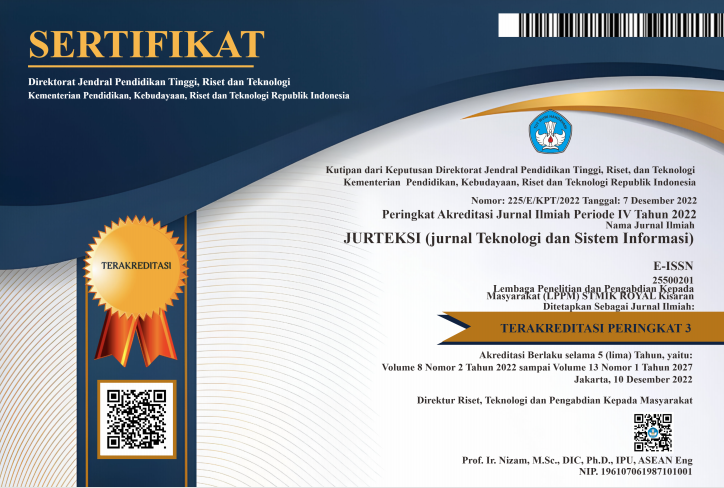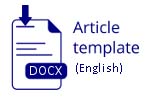UTILIZATION OF AGILE METHODS TO DEVELOP EMPLOYEE INTERPERSONAL SKILLS: A SYSTEMATIC LITERATURE REVIEW
Abstract
Abstract: Interpersonal skills in employees are an important part of technology companies in achieving their goals through the development of skills in their employees. The application of agile methods for application development has been widely carried out by technology companies. The agile method has the main principle of communication between employees, requiring skills to face these principles. The method used in this study is the systematic literature review (SLR) method to know how the use of agile methods can develop interpersonal skills in karyawan. In the initial search conducted using the Publish or Perish application, 740 journals were found in the range of 2015 to 2022. Next, journal filtering and cluster search continued using Microsoft Excel, Zotero, Mendeley, and VOS Viewer applications, resulting in 53 journals selected based on Q1. In the final stage of screening, researchers re-screened 9 journals that were used as a reference regarding the use of agile methods to develop employee interpersonal skills. The results showed that the agile development method can affect the development of employee interpersonal skills. 11 skills develop because of the use of this agile development method including team working, emotional intelligence, negotiation and persuasion, problem-solving, communication skills, conflict resolution, decision making, time management, organizational skills, listening, and relationship building. Of the 11 skills, the most mentioned is team working.
Keywords: agile development methods; interpersonal skills; literature review
Abstrak: Interpersonal skill pada karyawan menjadi bagian penting bagi perusahaan teknologi dalam mencapai tujuannya melalui berbagai pengembangan keterampilan. Penerapan metode agile untuk pengembangan aplikasi sudah banyak dilakukan oleh perusahaan-perusahaan teknologi. Metode agile memiliki prinsip utama berupa komunikasi antar karyawan sehingga membutuhkan keterampilan untuk menghadapi prinsip-prinsip tersebut. Metode yang digunakan pada penelitian ini yaitu metode systematic literature review (SLR) dengan tujuan untuk mengetahui bagaimana pemanfaatan metode agile dapat mengembangkan interpersonal skill pada karyawan. Pada pencarian awal yang dilakukan menggunakan aplikasi Publish or Perish, ditemukan 740 jurnal pada rentang tahun 2015 sampai 2022. Selanjutnya, penyaringan jurnal menggunakan aplikasi Microsoft Excel dan Mendeley Desktop yang menghasilkan 53 jurnal yang dipilih berdasarkan penilaian kualitas. Pada tahap akhir penyaringan, peneliti menyaring kembali menjadi 9 jurnal yang digunakan sebagai acuan mengenai pemanfaatan metode agile untuk mengembangkan interpersonal skills karyawan. Hasil penelitian menunjukan bahwa metode agile development dapat mempengaruhi pengembangan interpersonal skill karyawan, faktanya terdapat 11 skill yang berkembang karena pemanfaatan metode agile development ini diantaranya adalah team working, emotional intelligence, negotiation and persuasion, problem solving, communication skills, conflict resolution, decision making, time management, organizational skill, listening, dan relationship building. Dari 11 skill tersebut yang paling banyak disebut yaitu team working.
Kata kunci: interpersonal skills; metode agile development; literature review;
References
K. S. Haryana, “Penerapan Agile Development Methods Dengan Framework Scrum Pada Perancangan Perangkat Lunak Kehadiran Rapat Umum Berbasis Qr-Code,†Jurnal Computech & Bisnis, vol. 13, no. 2, pp. 70–79, 2019.
N. Hikmah, A. Suradika, and R. A. Ahmad Gunadi, “Metode Agile Untuk Meningkatkan Kreatifitas Guru Melalui Berbagai Pengetahuan (Knowledge Sharing) (Studi Kasus: SDN Cipulir 03 Kebayoran Lama, Jakarta,†Instruksional, vol. 3, no. 1, p. 30, Oct. 2021, doi: 10.24853/instruksional.3.1.30-39.
V. Venkatesh, J. Y. L. Thong, F. K. Y. Chan, H. Hoehle, and K. Spohrer, “How agile software de-velopment methods reduce work exhaustion: Insights on role per-ceptions and organizational skills,†Information Systems Journal, vol. 30, no. 4, pp. 733–761, Jul. 2020, doi: 10.1111/isj.12282.
F. Almeida and P. Carneiro, “Per-ceived Importance of Metrics for Agile Scrum Environments,†In-formation, vol. 14, no. 6, p. 327, Jun. 2023, doi: 10.3390/info14060327.
P. Kokol, “Agile Software Devel-opment in Healthcare: A Synthetic Scoping Review,†Applied Scienc-es, vol. 12, no. 19, p. 9462, Sep. 2022, doi: 10.3390/app12199462.
S. Modi and D. Strode, “Leader-ship in Agile Software Develop-ment: A Systematic Literature Re-view,†ACIS 2020 Proceedings, no. December, 2020.
T. J. Gandomani, Z. Tavakoli, H. Zulzalil, and H. K. Farsani, “The Role of Project Manager in Agile Software Teams: A Systematic Literature Review,†IEEE Access, vol. 8, pp. 117109–117121, 2020, doi: 10.1109/ACCESS.2020.3004450.
G. Arcos-Medina and D. Mauricio, “Aspects of software quality ap-plied to the process of agile soft-ware development: a systematic literature review,†International Journal of System Assurance En-gineering and Management, vol. 10, no. 5, pp. 867–897, Oct. 2019, doi: 10.1007/s13198-019-00840-7.
A. López-Alcarria, A. Olivares-Vicente, and F. Poza-Vilches, “A Systematic Review of the Use of Agile Methodologies in Education to Foster Sustainability Competen-cies,†Sustainability, vol. 11, no. 10, p. 2915, May 2019, doi: 10.3390/su11102915.
P. Marnada, T. Raharjo, B. Hardi-an, and A. Prasetyo, “Agile project management challenge in handling scope and change: A systematic literature review,†Procedia Com-put Sci, vol. 197, pp. 290–300, 2022, doi: 10.1016/j.procs.2021.12.143.
T. Raharjo and B. Purwandari, “Agile Project Management Chal-lenges and Mapping Solutions,†in Proceedings of the 3rd Interna-tional Conference on Software Engineering and Information Management, New York, NY, USA: ACM, Jan. 2020, pp. 123–129. doi: 10.1145/3378936.3378949.
R. A. B. Ouriques, K. Wnuk, T. Gorschek, and R. B. Svensson, “Knowledge Management Strate-gies and Processes in Agile Soft-ware Development: A Systematic Literature Review,†International Journal of Software Engineering and Knowledge Engineering, vol. 29, no. 03, pp. 345–380, Mar. 2019, doi: 10.1142/S0218194019500153.
B. Kitchenham and S. Charters, “Guidelines for performing Sys-tematic Literature Reviews in Software Engineering,†vol. 2, Jan. 2007, Accessed: May 08, 2023. [Online]. Available: https://www.researchgate.net/publicati-on/302924724_Guidelines_for_perform-ing_Systematic_Literature_Reviews_in_Software_Engineering
S.-A. McDermott, “Probation without boundaries? ‘Agile work-ing’ in the Community Rehabilita-tion Company ‘transformed’ land-scape,†Probation Journal, vol. 63, no. 2, pp. 193–201, Jun. 2016, doi: 10.1177/0264550516637243.
R. Patri and M. Suresh, “Model-ling the Enablers of Agile Perfor-mance in Healthcare Organization: A TISM Approach,†Global Jour-nal of Flexible Systems Manage-ment, vol. 18, no. 3, pp. 251–272, Sep. 2017, doi: 10.1007/s40171-017-0160-x.
F. Calefato and C. Ebert, “Agile Collaboration for Distributed Teams [Software Technology],†IEEE Softw, vol. 36, no. 1, pp. 72–78, Jan. 2019, doi: 10.1109/MS.2018.2874668.
F. Anseel, “Agile learning strate-gies for sustainable careers: a re-view and integrated model of feedback-seeking behavior and re-flection,†Curr Opin Environ Sus-tain, vol. 28, pp. 51–57, Oct. 2017, doi: 10.1016/j.cosust.2017.07.001.
Y. I. Alzoubi and A. Q. Gill, “Can Agile Enterprise Architecture be Implemented Successfully in Dis-tributed Agile Development? Em-pirical Findings,†Global Journal of Flexible Systems Management, vol. 23, no. 2, pp. 221–235, Jun. 2022, doi: 10.1007/s40171-022-00298-w.
L. Gren, A. Knauss, and C. J. Stet-tina, “Non-technical Individual Skills are Weakly Connected to The Maturity of Agile Practices,†Inf Softw Technol, vol. 99, pp. 11–20, Jul. 2018, doi: 10.1016/j.infsof.2018.02.006.
A. Hemon, B. Lyonnet, F. Rowe, and B. Fitzgerald, “From Agile to DevOps: Smart Skills and Collab-orations,†Information Systems Frontiers, vol. 22, no. 4, pp. 927–945, Aug. 2020, doi: 10.1007/s10796-019-09905-1.
K. Fitzgerald, L.-M. Browne, and R. F. Butler, “Using the Agile software development lifecycle to develop a standalone application for generating colour magnitude diagrams,†Astronomy and Com-puting, vol. 28, p. 100283, Jul. 2019, doi: 10.1016/j.ascom.2019.05.001.
S. V. Shrivastava and U. Rathod, “A Risk Management Framework for Distributed Agile Projects,†Inf Softw Technol, vol. 85, pp. 1–15, May 2017, doi: 10.1016/j.infsof.2016.12.005.













